Wei arranged for a private car and driver to take me to Mutianyu today. It’s a section of the Great Wall that is only about 2 hours drive from Beijing, but not super-touristy or “reconstructed” like the Badaling section most tours go to. I had been hoping for a clear day to get panoramas, but that hope was thwarted:

The visibility was near zero, so I was encouraged that by the time we got to Mutianyu it was drizzling. Waiting in line to buy tickets, I met Elliott from San Francisco, who worked with an LED artist (Jim Campbell, the one whose 3D LED sculpture hung in the SFMOMA lobby for awhile last year) and was here purchasing some weird piece of glass for another art work, and had the day off. We decided to walk up to the wall access rather than take the optional cable car. It was 86 flights of stairs to get up there. By the time we reached the top, it was a thunderstorm, and would rain on and off, often violently, for the remainder of our 3 hour visit.
There really isn’t anything small in China. The Colosseum in Rome is impressive, but today we walked the equivalent of several Colossei worth of masonry, and it was a tiny fraction of the wall. The chunk at Mutianyu consists of about 3 to 4 miles of accessible wall that you can walk along. The wall follows mountain ridges and valley cuts, so there’s a lot of up and down; my Fitbit registered 290 flights of stairs and over 17,500 steps.
This section dates from the 1360’s; some reconstruction has been done to make it safe, but there’s plenty of original wall here. Here’s the sense of it…
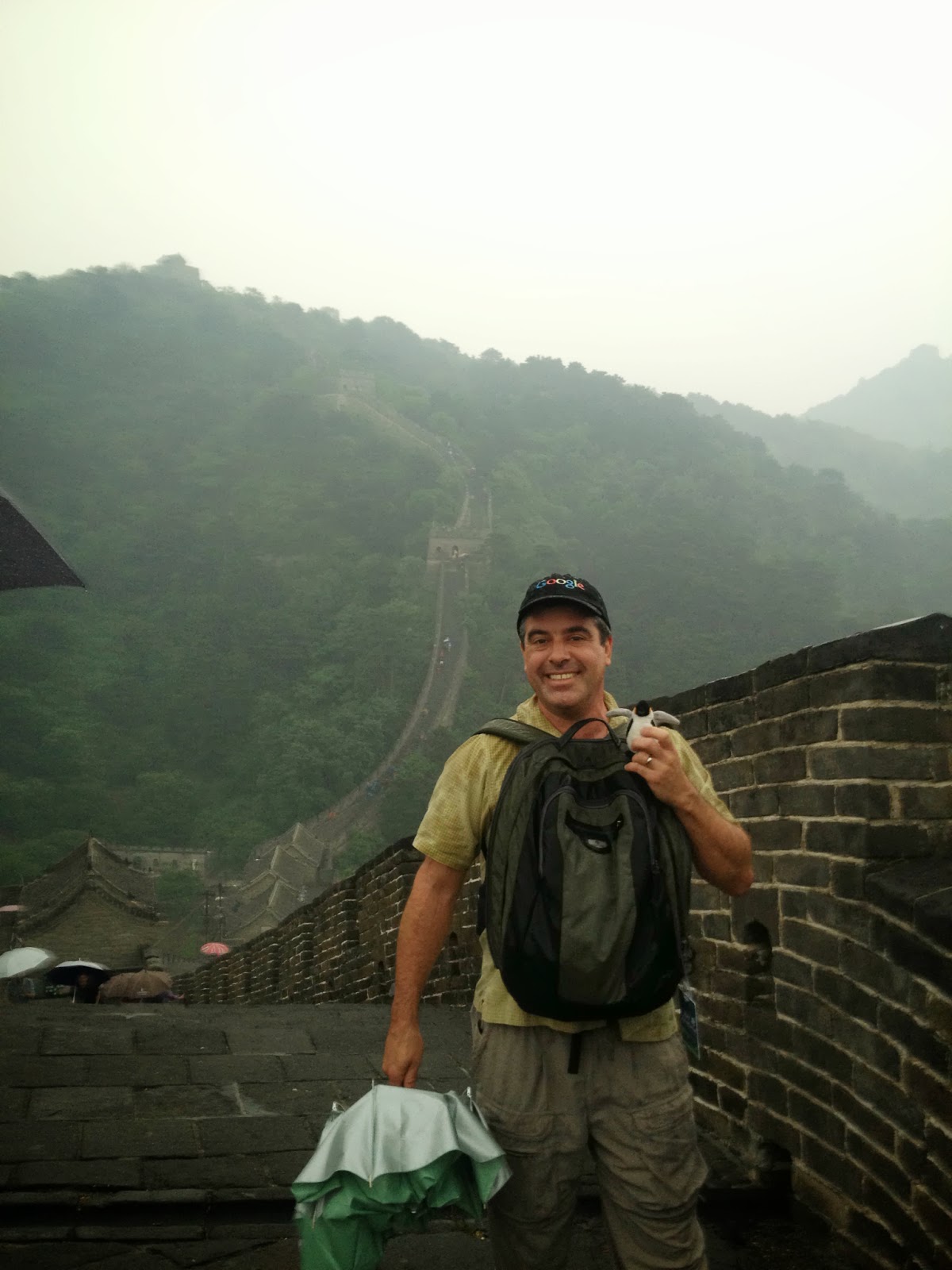

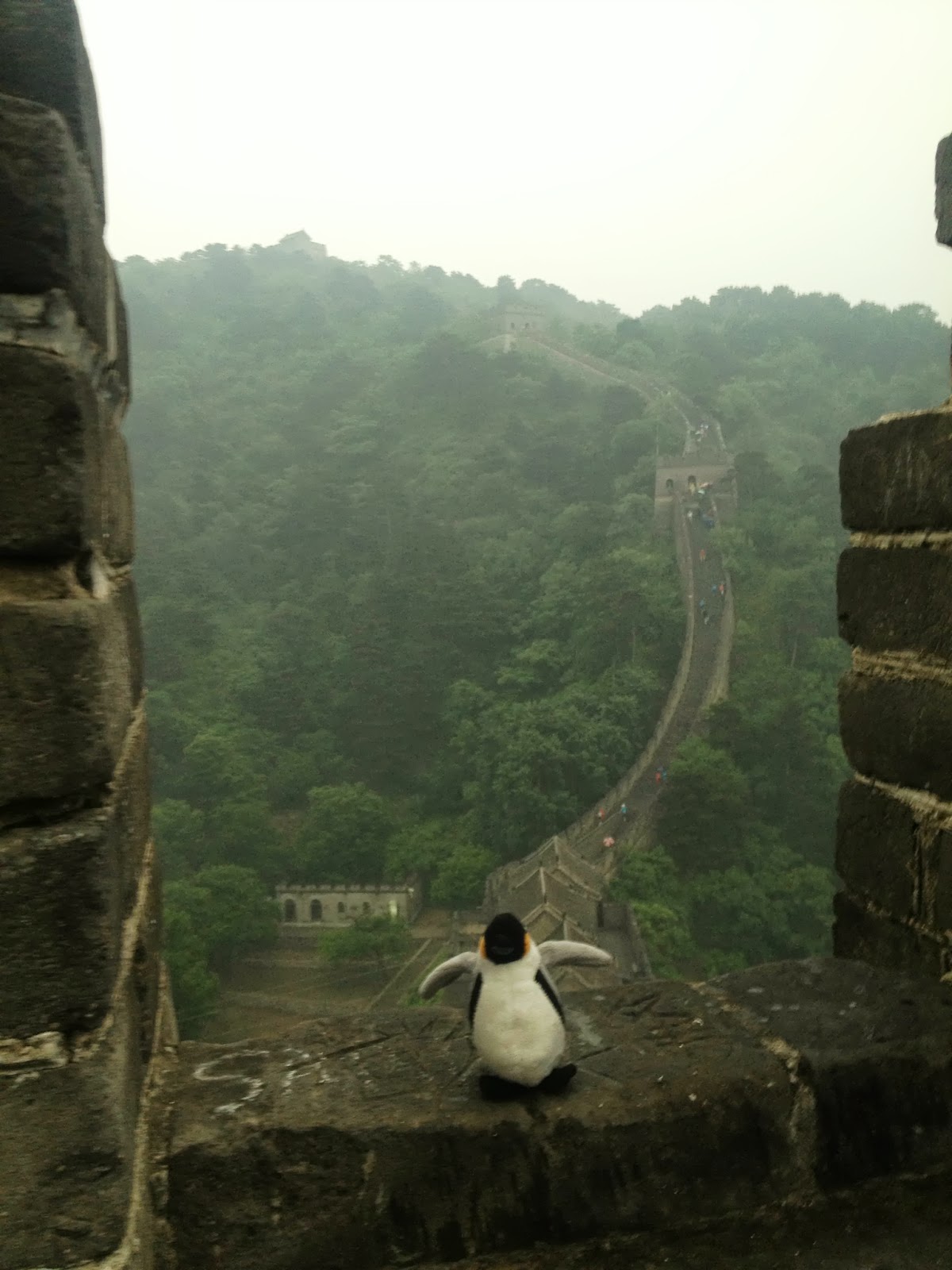

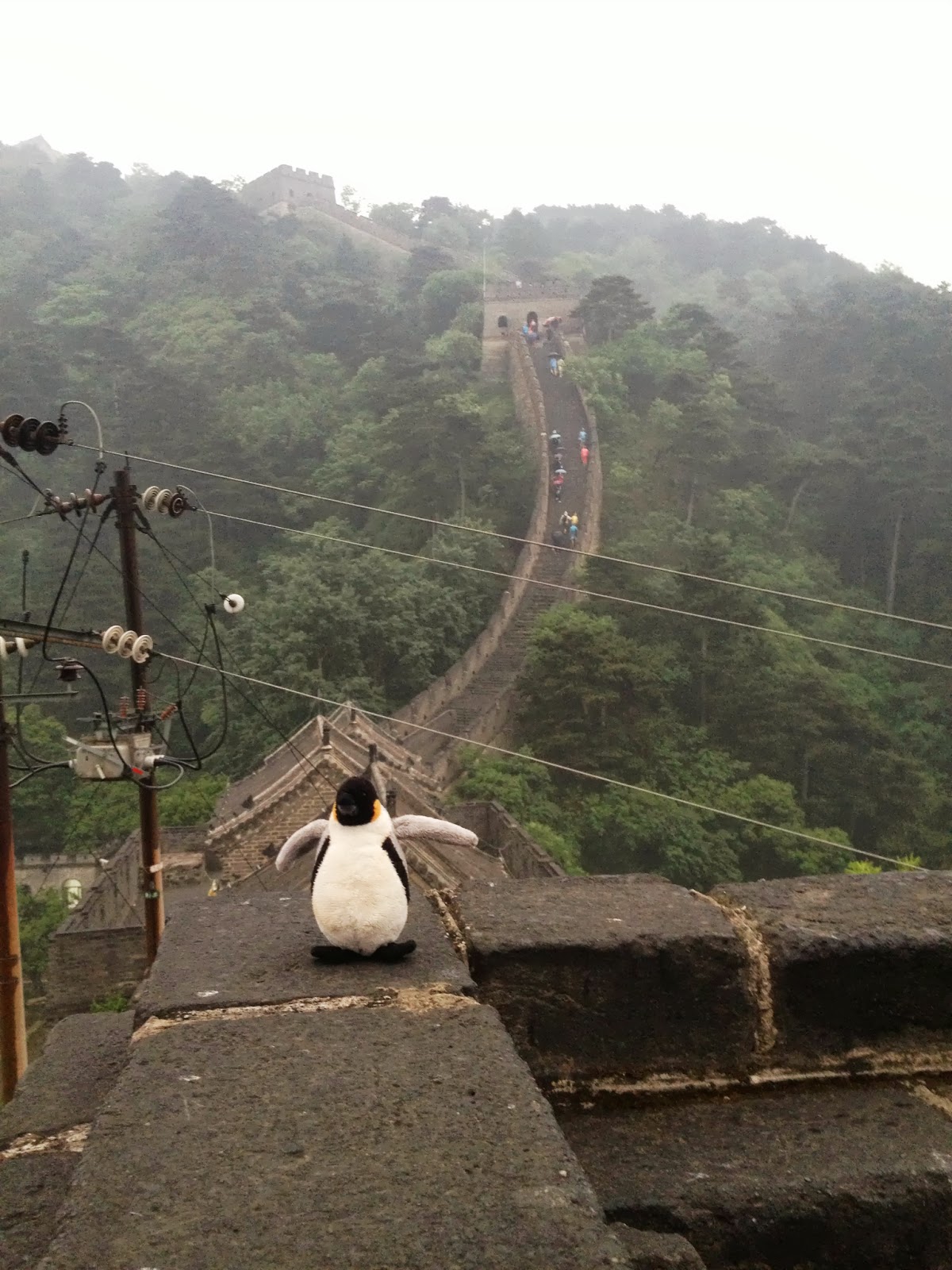
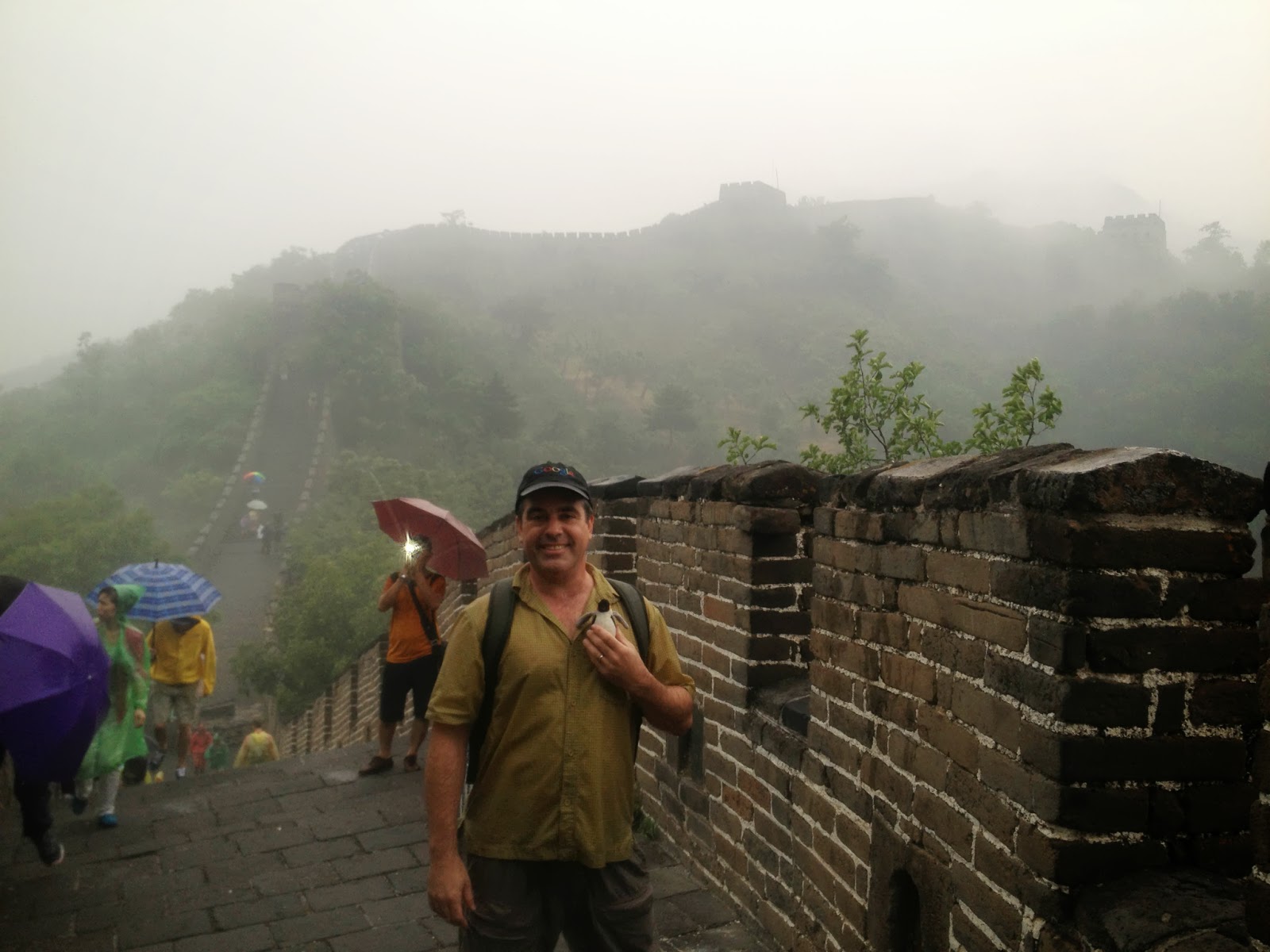
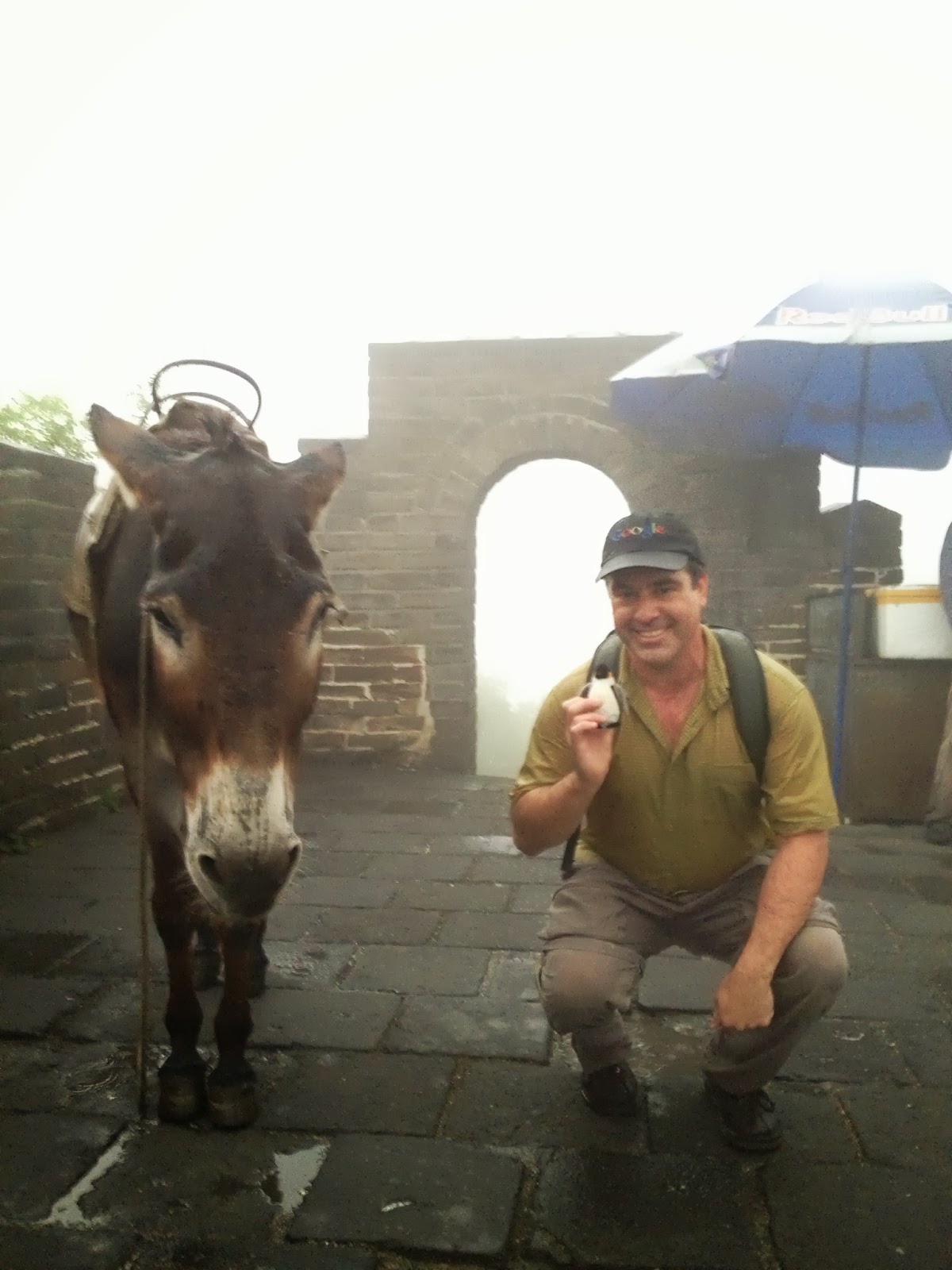
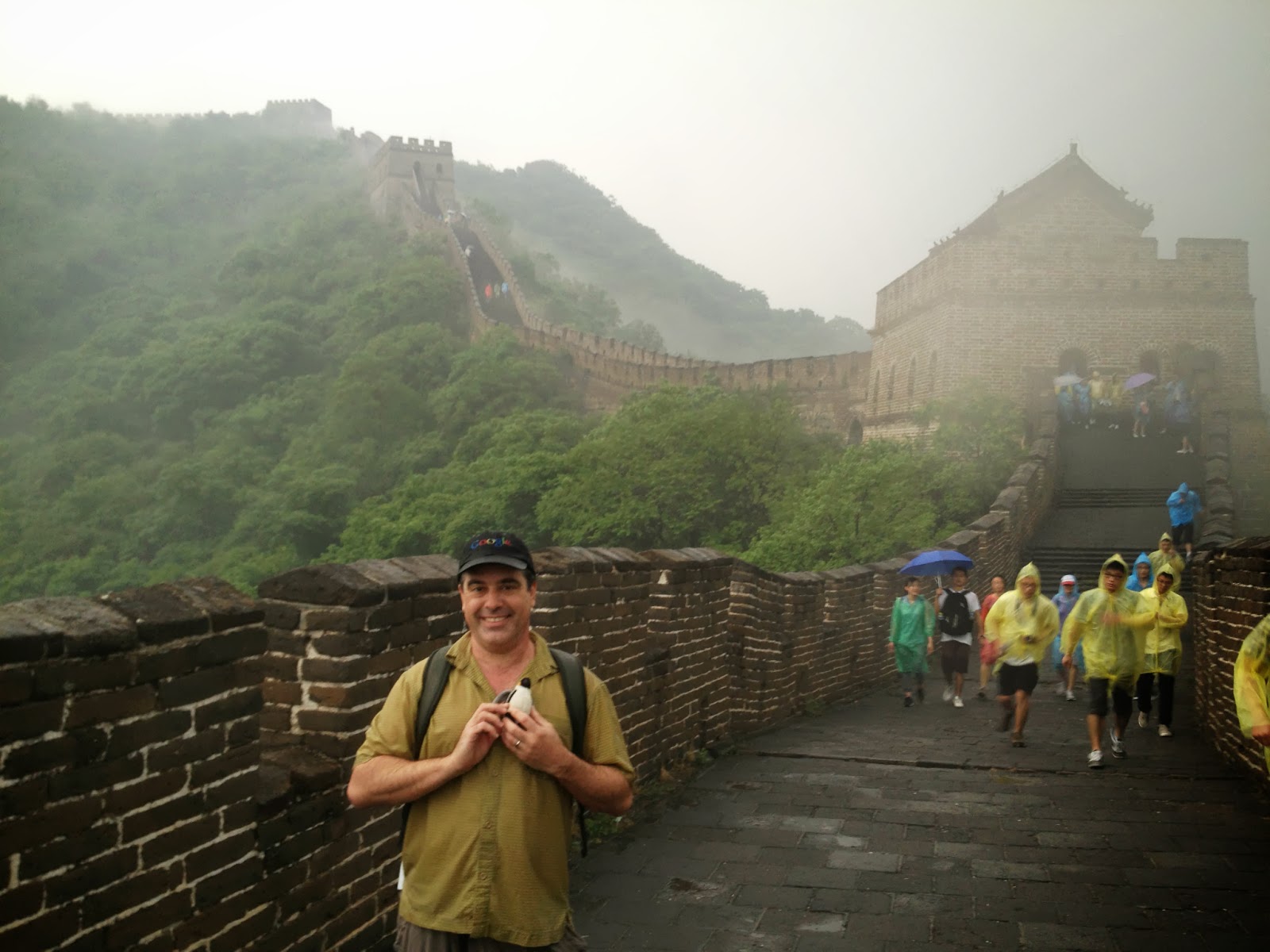



Wei said the wall wasn’t really made to keep the Mongols out, but to slow them down: their modus operandi was to storm into a region on horseback, plunder everything, and go home, and because they rode fast, they could travel light. A wall thwarts this m.o. Whatever it was for, it was amazing, and more amazing still the presence of souvenir and beverage stands at nearly every watchtower. How do they get the merchandise up there? Do they schlep up there for work every day? (It’s a pretty serious walk.)
Since it was still raining at the end of our visit, we took the chairlift down rather than walking. Disappointingly, the alpine slide was closed for repairs, otherwise we could’ve coasted down on over a mile worth of stainless steel track. If this were the US, the alpine slide would have been themed (“Storm down the mountain with the Mongol hordes”).
All in all, an amazing visit. While a clear sunny day would’ve provided better panoramas, the weather we had was very dramatic, and matches the pictures you see on postcards of mountains in China. The mountains are very wooded and the wall looks almost surreal among them. Visiting it should be on your life list.
I gave Elliott a ride back to Beijing since I had a private car anyway, and we went our separate ways, he back to his hostel (in the Guolu alley I wrote about yesterday!) and me to see the Temple of Heaven. Again, everything’s big in China: this is the temple where the emperor would pay homage to his ancestors and pray to the gods for a good harvest and good weather. The circular temple building is impressive enough—it’s held up by 28 timbers about 50 feet tall and a couple of feet in diameter, each cut from the trunk of a single tree. (12 months of the year + 4 seasons + 12 hours in a day = 28.) The buildings date from the 1420’s, like the Forbidden City, and are a five-star UNESCO World Heritage Site, justifiably so. I couldn’t take very good photos since my iPhone camera lens was fogged from having sat in my wet pocket on the way down from the Wall, but here’s the idea.


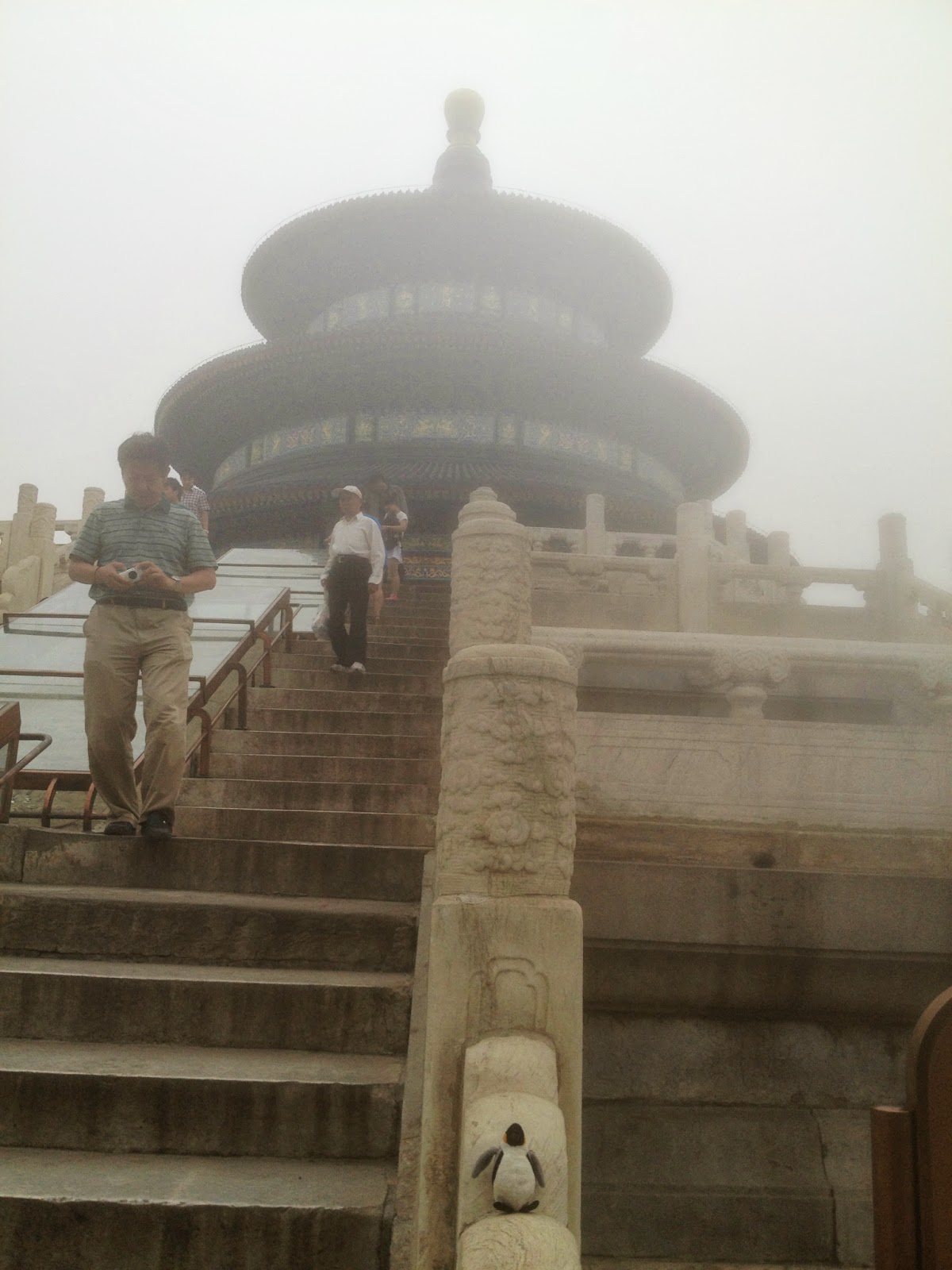
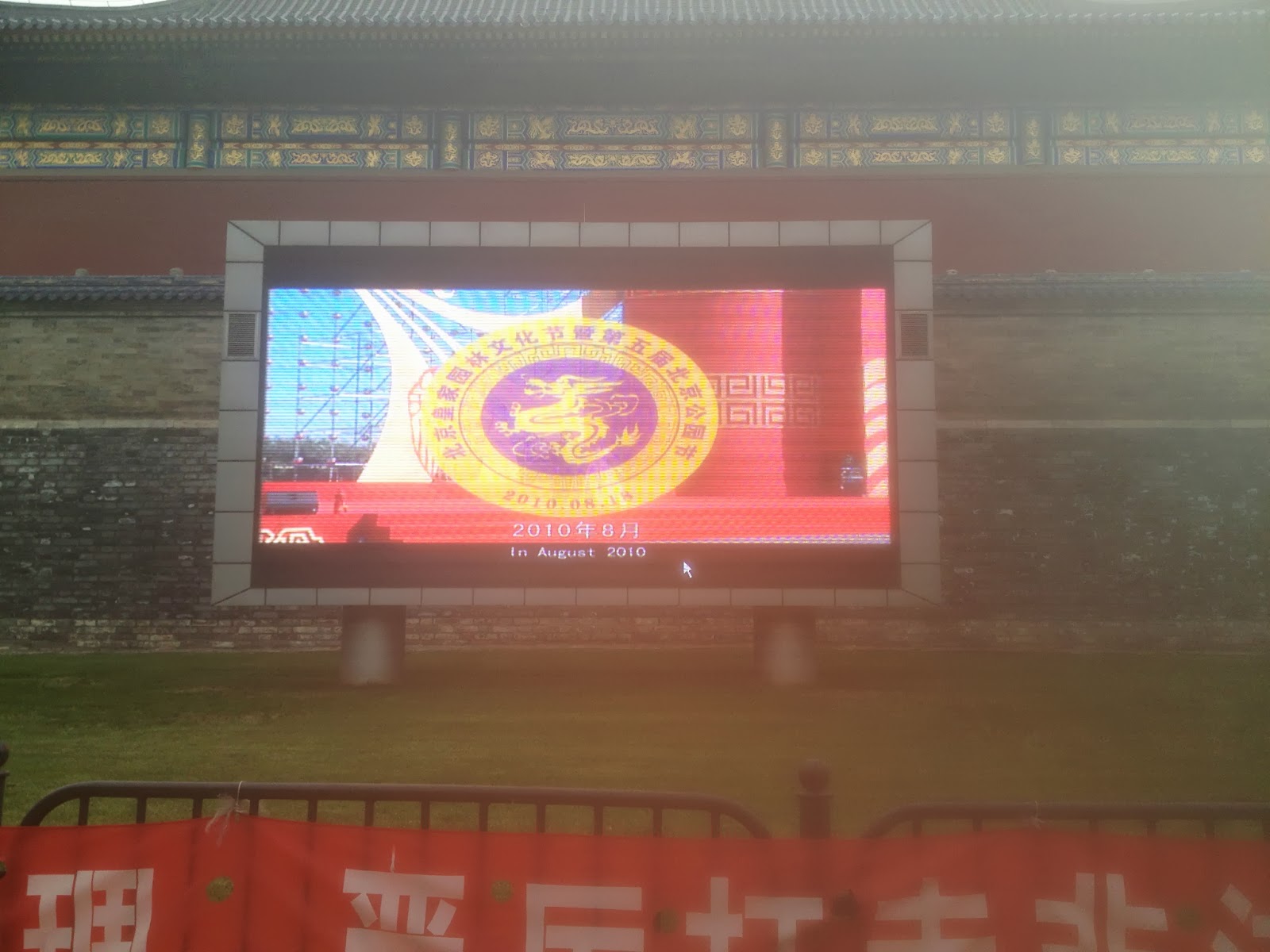
The Temple of Heaven is surrounded by an enormous park full of rows of hundreds and hundreds of junipers and conifers—one of the loveliest greenspaces in Beijing. However, virtually all of its pélouses are interdites. Apparently the best time to stroll through the park is weekends and evenings, when people do ballroom dancing and practice Tai Chi there.
After the Temple I walked through a truly authentic hutong north of the Temple and south of Chongwenmen, and since pictures wouldn’t do it justice, I shot four very short videos as I walked through. I finally got the authentic hutong experience: a self-contained community with vibrant street life. While not as affluent as other parts of Beijing, it was far more pleasant to walk around, and completely pedestrianized.
Last on the list was dinner. Wei and I ate at Bianyifang Roast Duck Restaurant, the restaurant where Peking Duck was invented. (It had been at that location for nearly 600 years, but when Beijing was remodeled, it was torn down and a shopping mall put there instead; so the restaurant is now inside that mall.)
Technically, the original (“classic”) Peking Duck is roasted in an oven, and Wei advised me that that version tends to come out a bit greasy. So we ordered the “nouveau” version, which is what’s served everywhere else in Beijing and probably everywhere outside China, in which the duck is roasted over a fire. It’s just as lean, but the skin is more crispy and it’s not greasy at all, as most of the fat drips into the fire during cooking.
True to form, the duck arrived complete with head etc., and was carved up in front of us. The bones and cartilage were promptly used to make stock, which was delivered to our table in time for an after-course. No part of the duck is wasted. (The menu also offered various duck viscera, but I wasn’t interested.) The duck dish was excellent—served mu shu style with roll-up pancakes, plum sauce and scallions.
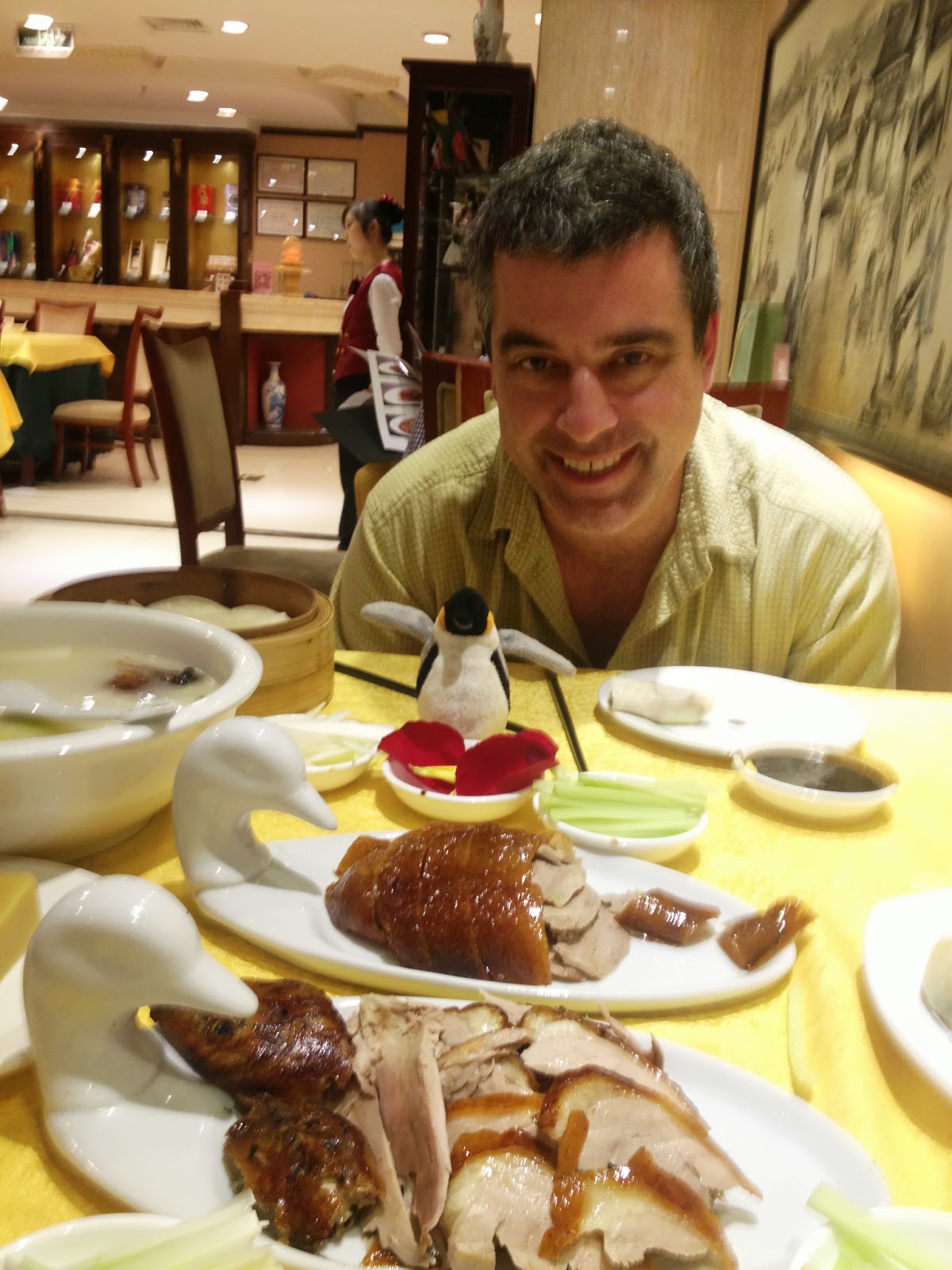
I’ll wrap up tomorrow with a post on general visitor tips for China. It was a successful visit. I’d return, but I’d do it in conjunction with Hong Kong and also try to get out into the mountains.